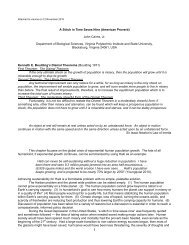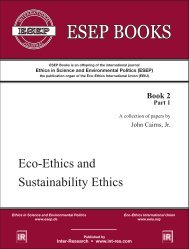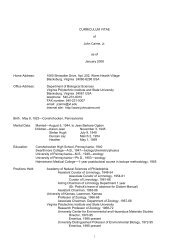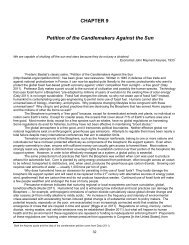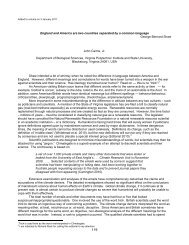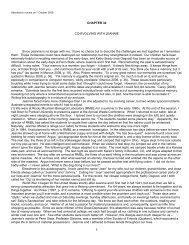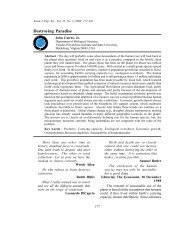View - ResearchGate
View - ResearchGate
View - ResearchGate
You also want an ePaper? Increase the reach of your titles
YUMPU automatically turns print PDFs into web optimized ePapers that Google loves.
278Article 33Reproduced from Ethics in Science and Environmental Politics (ESEP) with permission of Inter-ResearchESEP 2004:7–8www.esep.deChoosing Model Nations to Set Examples for AchievingSustainabilityJohn Cairns, Jr.Department of Biology, Virginia Polytechnic Institute and State University, Blacksburg, Virginia 24061, USA.E-mail: jcairns@vt.eduAt one time, the US would have seemed the best choice for a model nation to set the examplefor achieving sustainability. If Americans lived sustainably, more resources would be available foruse by less developed countries. However, playing the famous game of ‘What if?’ makes thechoice of the US as a model nation even less persuasive.Increased life expectancies, births to American citizens, and legal and illegal immigration, if continued,will dramatically increase the population of the US in the 21st century. In addition, the numberof Americans aged 65 and over is projected to increase from 35 million in 2000 to 78 million in2050 (Schneider 1999), and the present 4 million American citizens at age 65 will expand to 18 millionby 2050. Unfortunately, many demographers believe that these projections are underestimates(Schneider 1999).The US Census shows that 139 million American citizens live in coastal zones. If Florida andother southern coastal areas are typical, a significant percentage of this number is older people.Where will additional retirees live, since the prime areas are already full? These issues are dauntingones that must be addressed during the transition to sustainability.If future retirees choose coastal areas, the problem could worsen considerably. Over 50% of theAmerican population would be living on 17% of the contiguous land mass. What if the sea levelrises? Or worse yet, what if climate change were to cause both a sea level rise and markedlyincreased storm damage? Depending on the rate and amplitude of the sea level rise, between 10and 40% of the population residing in the coastal areas could become environmental refugees.What if destroyed seaports cannot be quickly re-established? What if housing, electricity, medicalcare, etc. cannot be quickly re-established? What if, as seems likely, other nations (which couldserve as ‘lifeboats’) are at or over capacity and cannot help the US? After all, a global sea level risewould create problems in all areas of the world. The time when migration could be used to solvecarrying capacity problems is over. Even if other nations enforced zero net immigration and keptthe birthrate at replacement level, they would still experience demographic shifts that would extendat least through the 21st century. This situation will also affect carrying capacity.What if water supply availability worsens (Postel 1999)? What if the economies of ‘lifeboats’ areseriously weakened by one or more of the consequences of unsustainable practices?





